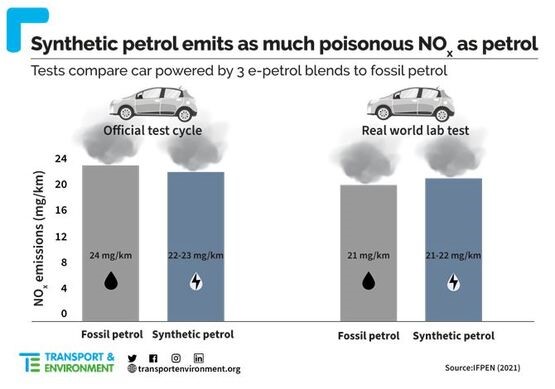Mercedes One Step Closer To Autonomous Cars
Friday, 4. February 2022
Mercedes-Benz has received approval for a self-driving system paving the way for it to be able to offer the technology to customers where national legislation allows its use.
In the UK, the Government gave the green light for self-driving vehicles on UK roads, earlier this year. Following a landmark call for evidence, it set out how vehicles fitted with Automated Lane Keeping System (ALKS) technology could legally be defined as self-driving, as long as they receive GB type approval and that there is no evidence to challenge the vehicle’s ability to self-drive.
The German manufacturer is the first automotive company in the world to meet the demanding legal requirements of UN-R157 for a Level 3 system, which was granted by the German Federal Motor Transport Authority (KBA).
Level 3 refers to the automated driving function taking over certain driving tasks. However, a driver is still required and must be ready to take control of the vehicle at all times when prompted to intervene by the vehicle.
Mercedes-Benz says that customers will be able to buy an S-Class with the Drive Pilot technology in the first half of 2022, enabling them to drive in conditionally automated mode at speeds of up to 60 km/h (37mph) in heavy traffic or congested situations on suitable stretches of motorway in Germany.
The system approval also applies to the EQS.
Markus Schäfer, member of the board of management of Daimler AG and Mercedes-Benz AG, and chief technology officer responsible for development and purchasing, said: “We are the first manufacturer to put conditionally automated driving into series production in Germany.
“With this milestone, we are once again proving our pioneering work in automated driving and also initiating a radical paradigm shift.
“For the first time in 136 years of automotive history, the vehicle takes over the dynamic driving task under certain conditions.”
The technical approval regulation with which such a system can be certified did not come into force until the beginning of 2021, while Germany was the first country to create a legal basis for the intended use of these systems.
Mercedes-Benz is initially offering Drive Pilot on 13,191 kilometres (8,200 miles) of motorway in Germany. The manufacturer says that extensive test drives for the system are already underway, for example in the USA and China.
As soon as there is a national legal framework for conditionally automated operation in additional markets, the technology will be rolled out step by step, it added.
How does the self-driving system work?
When the driver activates Drive Pilot, the system controls the speed and distance, and guides the vehicle within its lane.
The route profile, events occurring on the route and traffic signs, are correspondingly taken into consideration.
The system also reacts to unexpected traffic situations and handles them independently by employing evasive manoeuvres within the lane or by braking manoeuvres, says Mercedes-Benz.
Drive Pilot builds on the surround sensors of the Driving Assistance Package and comprises additional sensors that Mercedes-Benz considers indispensable for safe conditionally automated driving.
These include LiDAR, as well as a camera in the rear window and microphones, especially for detecting blue lights and other special signals from emergency vehicles, as well as a wetness sensor in the wheel well.
As well as the sensor data, the Drive Pilot receives information about the road geometry, route profile, traffic signs and unusual traffic events such as accidents or roadworks from a digital HD map. This is made available and updated via a backend connection.
The S-Class with the optional Drive Pilot also has redundant steering and braking systems and a redundant on-board electrical system, so that it remains manoeuvrable even if one of these systems fails and the safe handover to the driver can be ensured.
If the driver fails to take back control even after increasingly urgent prompting and expiry of the takeover time, for example in the event of a severe health problem, the system brakes the vehicle to a standstill in a controlled manner and with “suitable” deceleration.
At the same time the hazard warning lights and, once the vehicle has come to a standstill, the Mercedes-Benz emergency call system is activated and the doors and windows are unlocked, to make access to the interior easier for any first responders.
The exact location of the S-Class is determined using a highly accurate positioning system, says Mercedes-Benz.
In addition, data obtained from satellite navigation are matched with sensor data and data from an HD map.
Sensor data collected by LiDAR, camera, radar and ultrasonic sensors can be, for example, information on road geometry, route characteristics, landmarks or traffic signs.
The HD map provides a three-dimensional street and environment image. The map data are stored in back-end data centres and updated constantly, it says.
Each vehicle also stores an image of this map information on board, constantly compares it with the backend data and updates the local data set if necessary.
The HD map offers stable positioning through a representation of the surroundings independent of shadowing effects or a soiled sensor. It also provides information on road geometry or special traffic events such as roadworks.
This high-precision map differs from maps for navigation devices by, among other things, its higher accuracy in the centimetre rather than metre range and its detailed intersection and track model, the manufacturer says.
A central control unit provides the necessary software functions for conditionally automated driving. Within the framework of modern security architecture, important algorithms are calculated redundantly. By Graham Hill thanks to Fleet News























